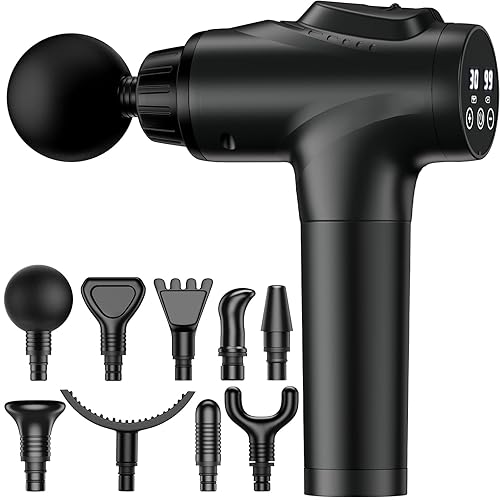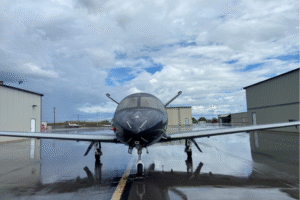Back and leg pain are common problems today, especially for people who sit for long hours, exercise intensely, or deal with daily stress. One effective tool that can help reduce pain and improve muscle recovery is a deep muscle massager. This device uses strong vibrations and targeted pressure to loosen tight muscles, improve blood circulation, and release muscle knots. When used the right way, it can offer quick relief and long-term benefits for both back and leg pain.
In this guide, you will learn the best methods to use a deep muscle massager safely and effectively at home to reduce discomfort and support muscle recovery.
Why Use a Deep Muscle Massager for Pain Relief?
A deep muscle massager targets the deeper layers of muscle tissue that are often hard to reach with normal stretching or light massage. When your muscles become tight, strained, or overworked, they form knots or trigger points that cause pain or stiffness. A deep muscle massager helps by:
-
Improving blood circulation
-
Reducing muscle tension
-
Releasing painful trigger points
-
Enhancing mobility and flexibility
-
Supporting faster recovery after workouts
It is especially useful for people with back pain, leg soreness, or muscle fatigue caused by sitting, running, weight training, or physical work.
How to Use a Deep Muscle Massager for Back Pain
Back muscles are large and often hold a lot of stress. When used properly, a deep massage tool can help release pressure and reduce stiffness.
Here is the best way to use your device for back pain:
1. Warm Up the Area First
Before using the massager, warm your back by taking a warm shower, applying a heating pad, or doing gentle stretches. Heat relaxes the tissues, making the massage more effective.
2. Use Slow and Controlled Movements
Place the deep muscle massager on your upper or lower back and move it slowly along the length of the muscle. Do not rush. Move in straight lines and apply steady pressure. One to two minutes per area is enough to start.
3. Avoid the Spine
Never press the device directly on your spine or bones. Focus instead on the muscles next to the spine, such as the lower back muscles and upper back between the shoulders.
4. Focus on Trigger Points
If you feel a painful knot, apply gentle pressure for 15 to 20 seconds until the tension reduces. Do not force it. Pain should slowly ease, not increase sharply.
5. Finish with Light Stretching
After massaging, stretch your back muscles for a few minutes. This helps maintain flexibility and prevents the muscle from tightening again.

How to Use a Deep Muscle Massager for Leg Pain
Leg pain can come from exercise, walking, or long standing hours. Areas like the thighs, hamstrings, and calves respond very well to deep muscle massage.
Follow these steps for best results:
1. Target Large Muscle Groups First
Start with the thighs. Move the massager in long strokes from the knee upward toward the hip. Then repeat on the hamstrings at the back of the leg.
2. Massage the Calves with Upward Strokes
Place the deep muscle massager on the calf and move upward slowly. This improves circulation and reduces tightness, especially for people who run or wear tight shoes.
3. Use Shorter Strokes on Painful Areas
If you find a tight spot, use smaller and slower strokes. Apply gentle pressure, letting the muscle relax naturally.
4. Avoid Knees and Bones
Do not place the device directly on the knee joint, shinbone, or hip bone. These areas are sensitive and can bruise easily.
How Long Should You Use a Deep Muscle Massager?
For each muscle group, two to five minutes is enough. Overuse can increase soreness instead of relieving it. Beginners should start with the lowest speed and shorter sessions, then increase time as their muscles adapt.
When to Use the Massager for Best Results
The best times to use your deep muscle device are:
-
After exercise, to reduce muscle soreness
-
Before a workout, to warm up the muscles
-
After sitting all day, to release tension
-
Before bed, to relax tight muscles and improve sleep
Consistency is key. Using the massager three to five times a week can greatly reduce chronic pain and stiffness.
Safety Tips to Remember
To avoid injury or discomfort:
-
Do not use on bruised or swollen areas
-
Do not apply extreme pressure
-
Avoid using on the spine, joints or bones
-
Drink water after your session to help muscle recovery
-
Stop if you feel sharp pain
Conclusion
A deep muscle massager is a powerful tool for managing back and leg pain when used correctly. By improving circulation, releasing tight muscles, and supporting faster recovery, it can help you move more freely and feel better throughout the day. Combine it with stretching, regular movement, and good posture for long-lasting results.
If you want fast and natural relief without expensive therapy sessions, adding a deep muscle massager to your routine can be a smart and effective solution.




